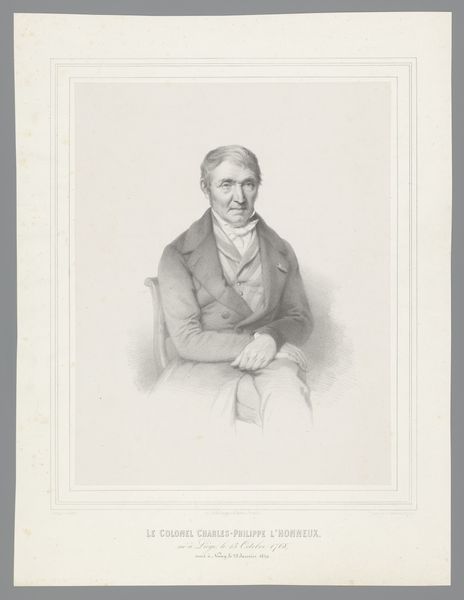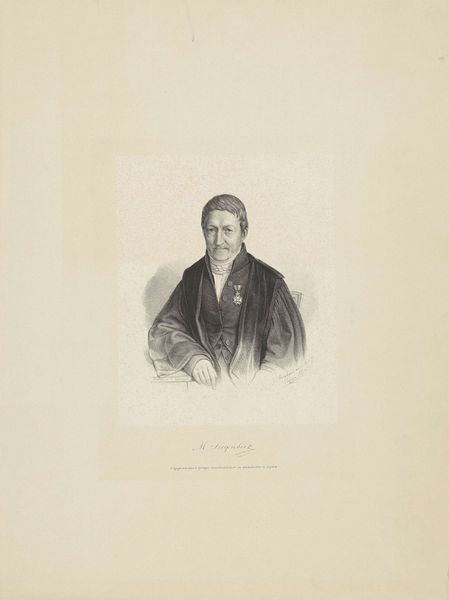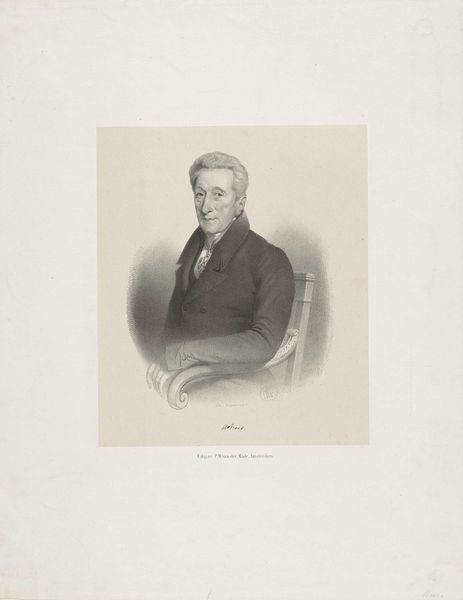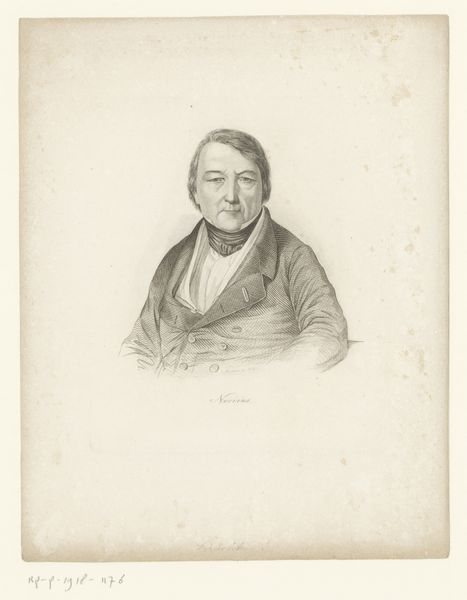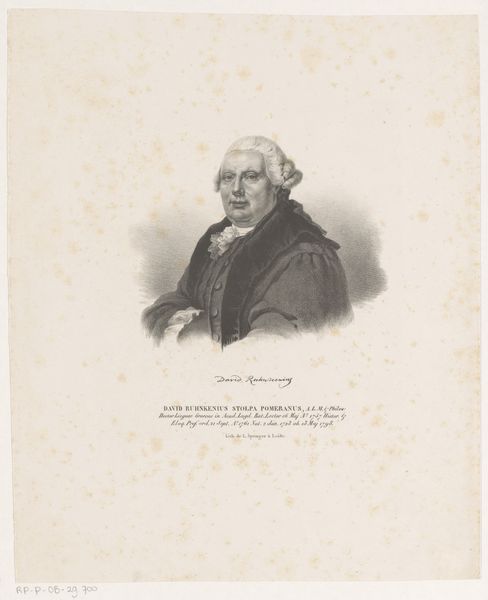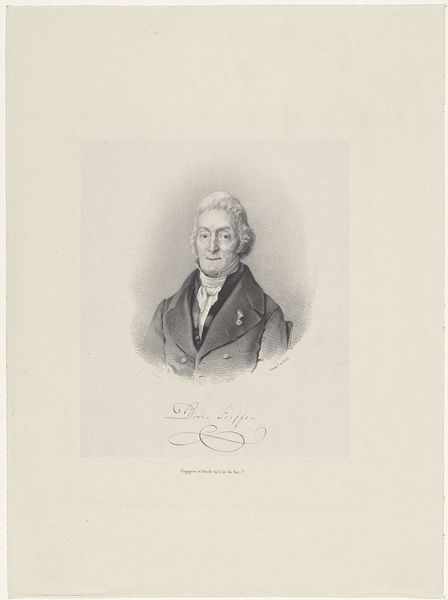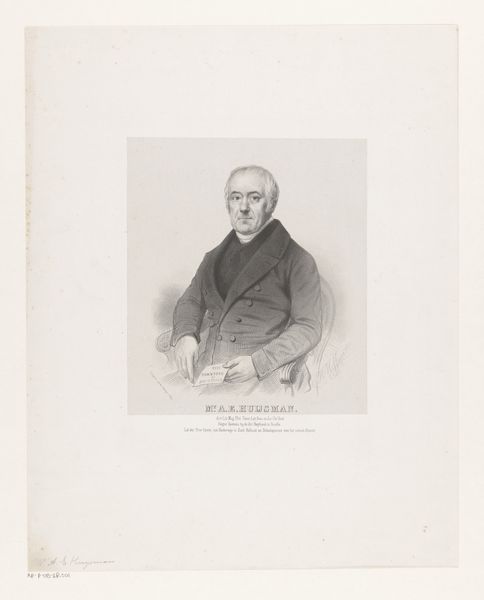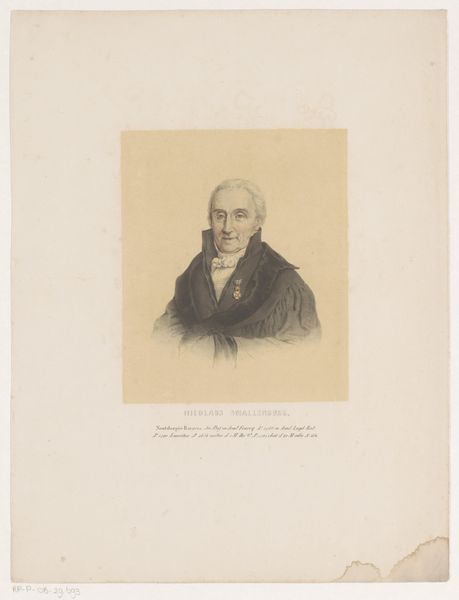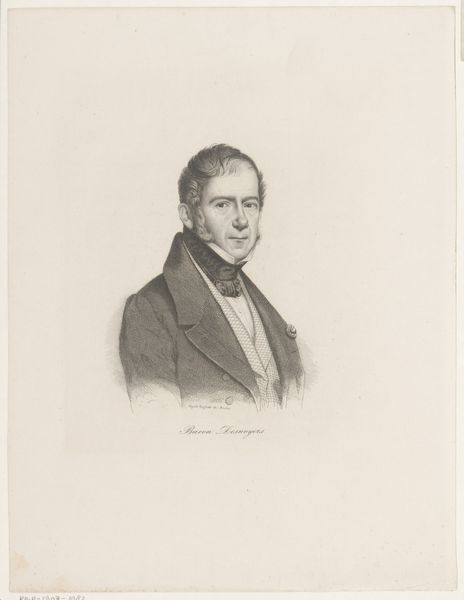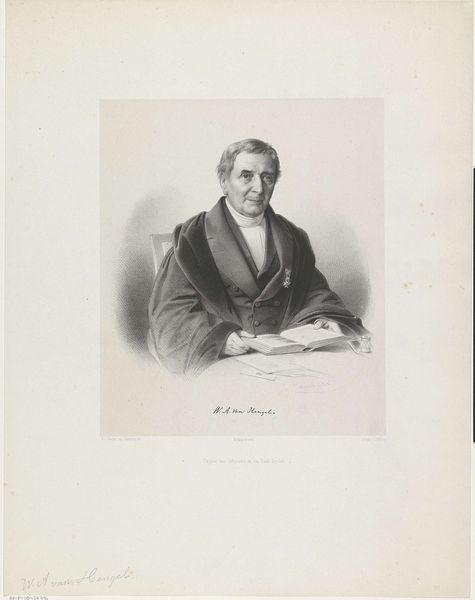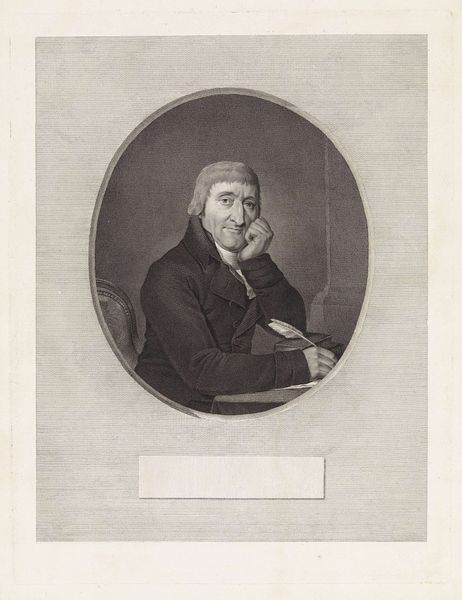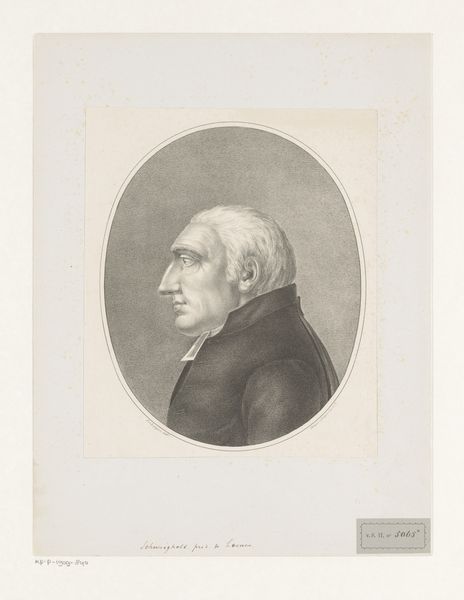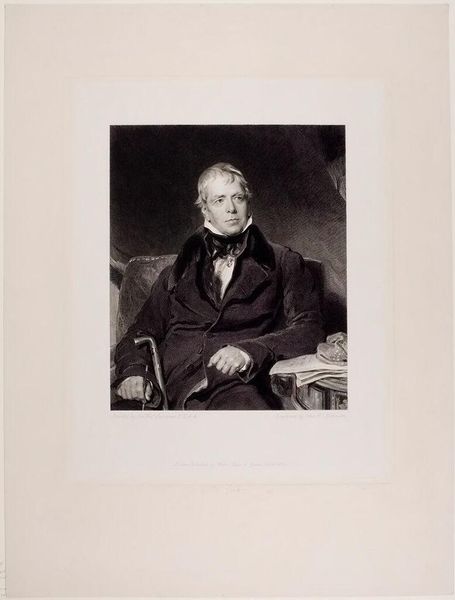
drawing, print, engraving
#
portrait
#
pencil drawn
#
drawing
# print
#
pencil sketch
#
pencil drawing
#
portrait drawing
#
engraving
Dimensions: height 440 mm, width 345 mm
Copyright: Rijks Museum: Open Domain
Curator: Welcome. We’re standing before an early 19th-century engraving: "Portret van de arts Herman Haakman," dating from before 1840. The artist is Henricus Wilhelmus Couwenberg. Editor: It has this rather somber mood, doesn't it? The tightly controlled lines of the engraving definitely give a feeling of formality. He looks incredibly self-possessed and his posture looks imposing, and that soft hatching only intensifies his controlled presence. Curator: Note the delicate execution, particularly in the facial features. Couwenberg employs a precise linework to render the physiognomy of Herman Haakman with detail, capturing a sense of his character through the detailed shading. Editor: What strikes me is the very clear positioning of power dynamics. This portrait isn't just about commemorating a doctor. It places him as an authority, firmly entrenched within a specific social and perhaps even scientific hierarchy. I would say that it tells as much about social representation as it does about Doctor Haakman himself. His access to professional networks would explain the production of this art piece in the first place. Curator: Agreed, though I would draw our attention to the almost photorealistic depiction. See how light and shadow play across his face, created using such controlled engraving techniques? The detail suggests an objective capturing of likeness. It's not an emotionally driven image. Instead it relies upon structure, control, and detailed textures achieved using careful cross-hatching. Editor: While admiring the technique, one must wonder how Haakman may have benefited professionally from this public image of dignified intelligence. Curator: Indeed. It serves as an interesting piece, showing us the aesthetics of that time, and moreover as a glimpse into 19th-century society's approach to public imagery. Editor: Ultimately, a confluence of aesthetics and society informing the meaning within an engraved portrait, both beautiful and socially telling.
Comments
No comments
Be the first to comment and join the conversation on the ultimate creative platform.
